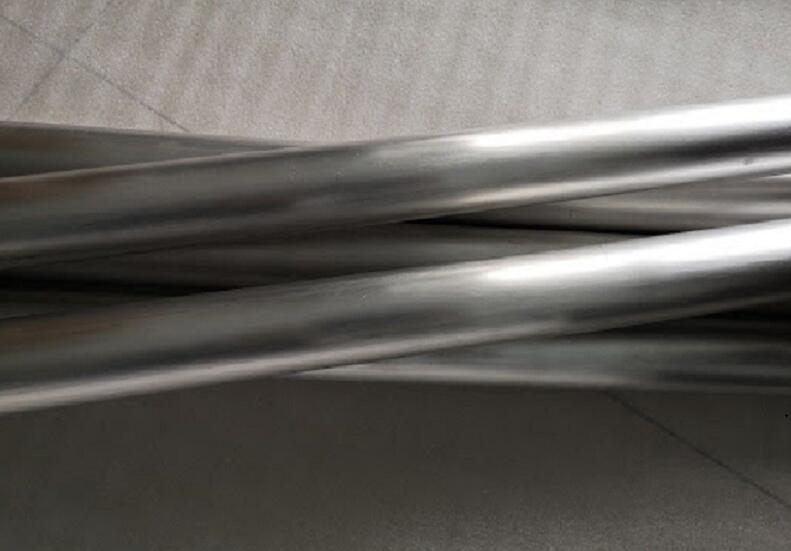Characteristics & Applications of Magnesium Alloy Rods
Magnesium alloy is an alloy composed of magnesium and other elements. It is characterized by low density, high specific strength, large elastic modulus, good shock absorption, greater impact load capacity than aluminum alloy, and good resistance to organic and alkali corrosion. The main alloying elements of magnesium alloys are aluminum, zinc, manganese, cerium, thorium, and a small amount of zirconium or cadmium. Magnesium alloy rod is a bar that uses magnesium alloy as raw material. In this article, let's take a look at the characteristics & applications of magnesium alloy rods.

Characteristics of Magnesium Alloy Rods
1. Low density, good specific performance, good shock absorption performance, good electrical and thermal conductivity, and good process performance.
2. Poor corrosion resistance, easy to be oxidized, easy to burn, poor heat resistance.
3. Its processing and corrosion and mechanical properties have many characteristics: fast heat dissipation, lightweight, good rigidity, certain corrosion resistance and dimensional stability, impact resistance, abrasion resistance, good attenuation performance, and easy recycling.
4. It has high thermal and electrical conductivity, non-magnetic, good shielding, and non-toxic characteristics.
Applications of Magnesium Alloy Rods
1. Usually, the best inner tank material is used in the water heater, and the corrosion of the inner tank cannot be avoided. In order to protect the inner tank and heating pipe of the water heater, many manufacturers install magnesium rods for the water heater. This not only protects the inner tank but also extends the service life of the electric water heater.
2. Magnesium rods for magnesium alloy batteries, such as the negative electrode of an air battery, form a current and voltage with the positive electrode to make emergency lighting and backup power supplies.
3. Magnesium rods for outdoor life-saving lighting. The U.S. military designated magnesium rods for ignition, taking advantage of the activity and easy preservation of magnesium rods.
4. Magnesium alloy rods are used for machining parts, turning parts, such as motor housings.
5. Sacrificial anode rod for hull protection.
Precautions for Processing Magnesium Alloys
1. Magnesium chips are lively and easily burnt at high temperatures. During the cutting of magnesium alloy, most of the incisions of magnesium chips are unoxidized magnesium and magnesium alloy. Because metallic magnesium is a first-class flammable product when wet, the ignition point and minimum ignition energy are low, and the chips are thin and small, and the specific surface area is large, so it is easy to burn in the air under a high-temperature environment.
2. High temperature will be generated during high-speed cutting, which will ignite magnesium chips. During machining, in order to give full play to the cutting performance of the tool, improve production efficiency and workpiece quality, generally higher cutting speeds are required. High-speed cutting often causes the temperature of metal chips to reach 700°C~1000°C. When there is no effective supply of coolant, the high temperature will be enough to ignite the magnesium chips and start a fire.
3. The burning temperature of magnesium chips is high, the fire spreads quickly, and it is difficult to fight the fire. Once a fire occurs, magnesium has a combustion temperature of 3000°C and a combustion heat value of 25121 kJ/kg. When magnesium chips are in powder form, they can explode when mixed with air and exposed to fire.
In addition, magnesium can react chemically to release hydrogen when it meets with water at high temperatures. Therefore, water, foam, carbon tetrachloride, and other extinguishing agents are restricted in metal magnesium fires, and the extinguishing effects of dry powder and halogenated alkane extinguishing agents are not obvious, making it difficult to extinguish.
Conclusion
Thank you for reading our article and we hope it can help you to have a better understanding of the characteristics & applications of magnesium alloy rods. If you want to know more about magnesium and magnesium alloys, we would like to advise you to visit Stanford Advanced Materials (SAM) for more information.
As a worldwide supplier of magnesium products, Stanford Advanced Materials (SAM) has over two decades of experience in the manufacture and sale of magnesium alloys, offering customers high-quality magnesium alloy rods to meet their R&D and production needs. As such, we are confident that SAM will be your favorite magnesium alloy supplier and business partner.


